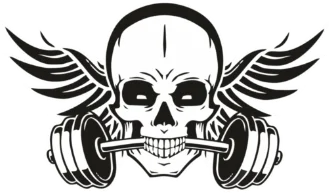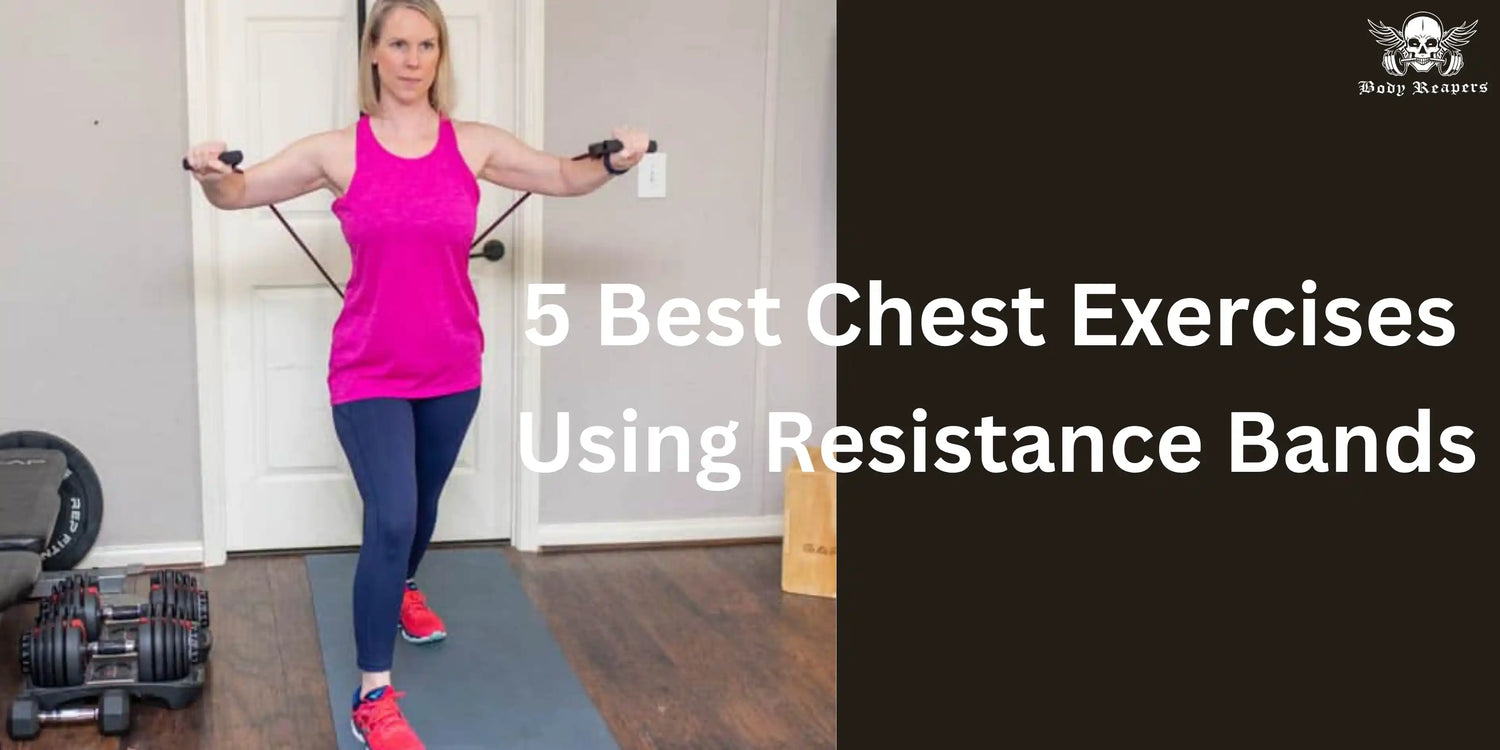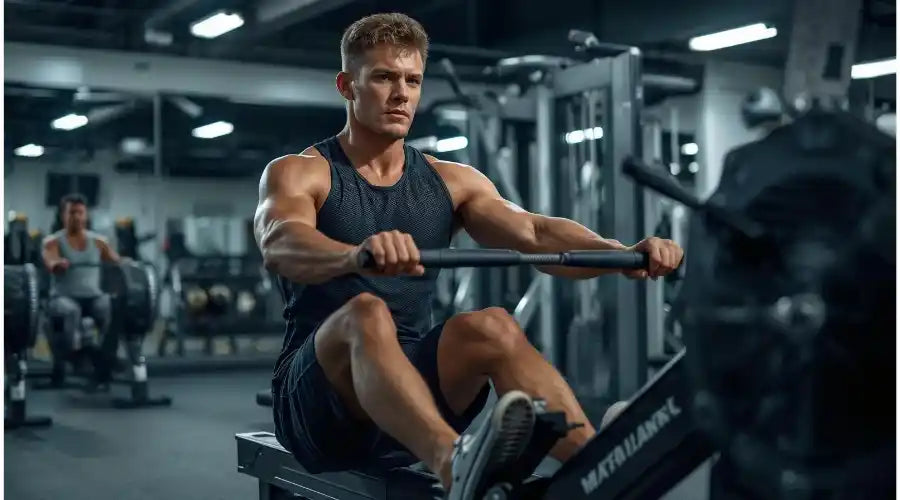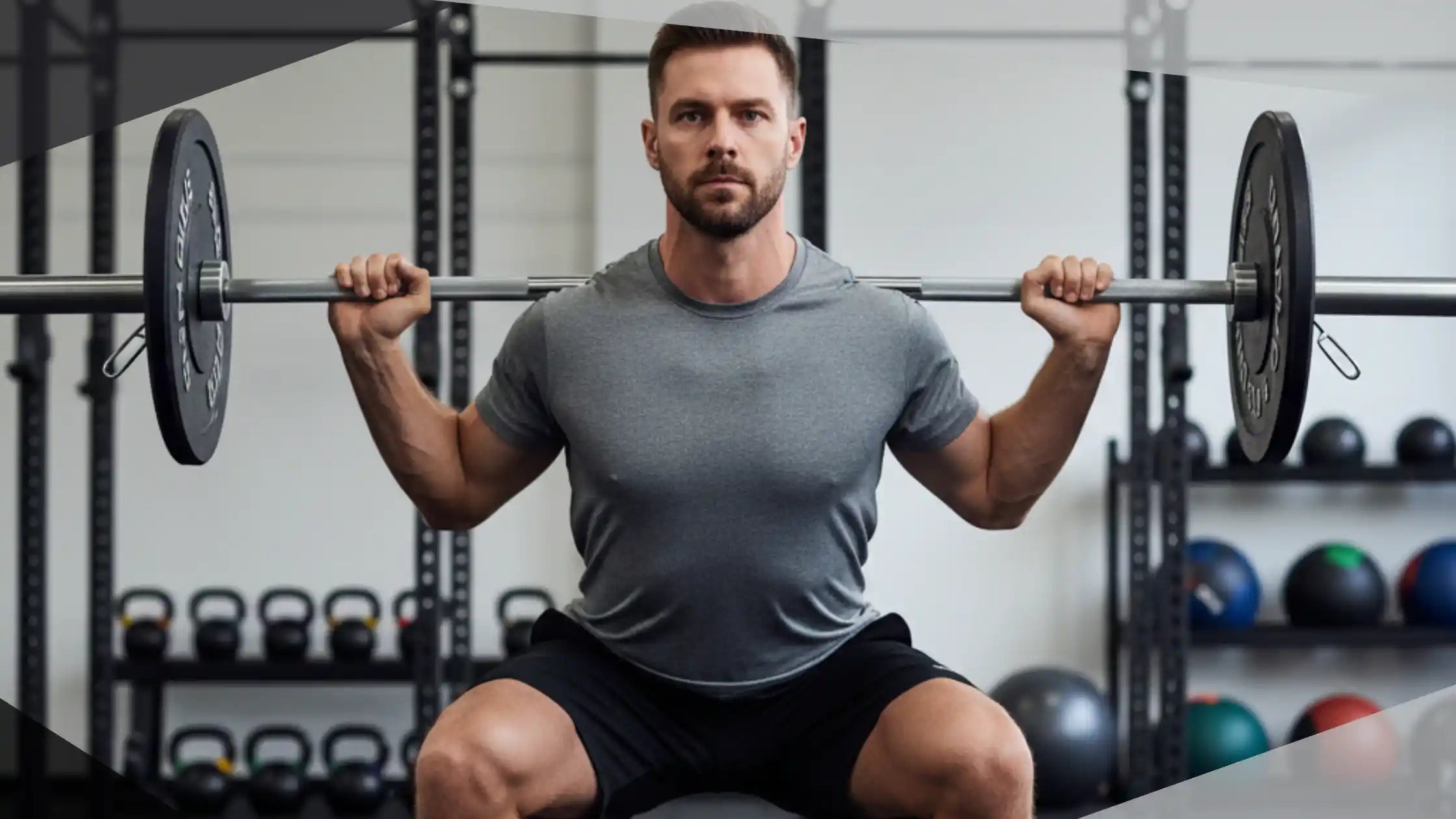Chest exercises using resistance bands are one of the best ways to gain muscle without weights or machines. For home training, traveling, or a safer alternative to barbell pressing, bands are a great option.
Most lifters think progress stalls without a bench press. In reality, resistance bands provide constant tension throughout the movement, something dumbbells and barbells don’t consistently achieve. Research confirms that elastic resistance can produce strength gains comparable to those achieved with free weights.
In this guide, you’ll learn the 5 best chest exercises using resistance bands, complete with benefits, step-by-step instructions, variations, and pro tips.
Chest Anatomy 101
To train smarter, you need to know what you’re working on.

Pectoralis Major: The large, fan-shaped chest muscle.
- Clavicular Head (Upper Chest): Runs along the collarbone. Best hit with incline presses and low-to-high flys.
- Sternal Head (Mid/Lower Chest): The thicker portion across your chest. Handles most of the pressing power.
Pectoralis Minor: A smaller muscle beneath the pectoralis major. Helps stabilize the shoulder blade during pushing.
Serratus Anterior: Found along your ribs. Works with the chest during pressing and helps with shoulder mobility.
Understanding these muscles makes it clear why changing angles with bands (flat, incline, fly) is key to complete chest development.
5 Best Chest Exercises Using Resistance Bands
1. Resistance Band Chest Press
Why It Works:
The banded chest press mimics the classic bench press but offers smoother resistance and less stress on the shoulders. It strengthens the pecs, shoulders, and triceps while keeping tension constant through the full range of motion.
Benefits:
- Builds mid-chest thickness and pressing power.
- Safer for joints than heavy barbells.
- Portable and adjustable; you control the resistance.
How to Do It
- Anchor the band behind you at chest height.
- Grab the handles and step forward until the band is taut.
- Press forward until your arms are straight.
- Slowly return to start, resisting the pull.
Keep elbows slightly tucked to avoid unnecessary shoulder strain.
2. Resistance Band Chest Fly
Band chest flies are more effective exercise for isolating the pecs than a press. Bringing your arms together increases the intensity on those chest fibers, even though these bands will keep your muscles under tension as you go through the exercise. The stretch and peak contraction combo is great for shaping the chest.
Unlike presses (which are more about overall muscle mass), resistance band flies provide tension the entire time, so your muscles never get a full break. This in turn brings attention to areas, such as the inner chest, that press work often overlooks. If you've struggled to achieve that defined, sculpted chest, this exercise is precisely what you need to refine those details.
Benefits:
- Increases chest activation and pump.
- Builds inner chest detail and shape.
- Great accessory move after heavy presses.
How to Complete It:
- Hold the band at shoulder height behind you.
- With your arms spread wide and your elbows bent slightly, grasp the handles.
- Raise your arms in front of you like you're hugging a tree.
- Squeeze your chest, then gently come back.
Pro Tip: Don’t overstretch; keep tension safe on the shoulders.
3. Incline Resistance Band Press
The Reason It Works
When it comes to aesthetics and pressing strength, the upper chest is frequently the weakest area. This incline band press fills out your chest and balances proportions by focusing on the clavicular head of the pecs.
Benefits:
- Directly stimulates the upper chest.
- Improves shoulder-to-chest strength balance.
- Enhances overall upper body appearance.
Studies reveal that applying pressure at about 30 degrees better engages the upper pecs (Journal of Sports Science, 2020).
How to Do It
- Attach the band low to the floor.
- Step Out with Handles in your Hand.
- Hinge press up, let’s say at a 30-45° angle.
- Lower, and control back and tension.
4. Resistance Band Push-Ups
Why It Works:
Push-ups already build serious chest strength. The band adds extra resistance on the way up. That turns a bodyweight move into progressive overload. Simple, but powerful for growth.
Benefits:
Develops the core, triceps, shoulders, and chest simultaneously.
Makes push-ups easier with resistance bands, scales by switching to thicker bands.
How to Do It
- Wrap the band across your upper back.
- Pin the ends under your palms.
- Lower chest to the floor.
- Press up powerfully against the band.
5. Single-Arm Resistance Band Press
Why It Works:
Unilateral pressing forces your body to stabilize, engaging the core and fixing strength imbalances between sides. It also adds a functional, athletic dimension to your chest training.
Benefits:
- Balances left and right chest development.
- Improves core strength and anti-rotation control.
- Great carryover to sports and real-life strength.
How to Do It
- Anchor band behind at chest height.
- Hold one handle, stand with a staggered stance.
- Press forward with one arm, resisting torso twist.
- Return slowly and repeat on the other side.
Pro Tip: Keep your torso square, don’t let the band pull you off-center.
Variation: Add a step forward as you press for an athletic power move.
Progressive Chest Workout Plans
Beginner – 2 days a week
- Band Chest Press → 3 sets of 12
- Band Chest Fly → 2 sets of 15
- Push-Ups → 2 sets of 12
Intermediate – 3 days a week
- Band Chest Press → 4 sets of 10
- Incline Band Press → 3 sets of 10
- Chest Fly → 3 sets of 12
- Push-Ups → 3 sets of 15
Advanced – 3 days a week
- Heavy Band Chest Press → 4 sets of 8
- Incline Band Press → 4 sets of 10
- Chest Fly → 4 sets of 12
- Decline Push-Ups → 3 sets of 20
- Single-Arm Band Press → 3 sets of 10
Conclusion
Building a strong, defined chest doesn’t require heavy barbells. With these 5 chest exercises using resistance bands, you can train every fiber of your pecs, from upper to lower, with safe and effective resistance.
Ready to transform your chest training? Grab your Body Reapers Resistance Bands today and experience strength anywhere.





Leave a comment
This site is protected by hCaptcha and the hCaptcha Privacy Policy and Terms of Service apply.